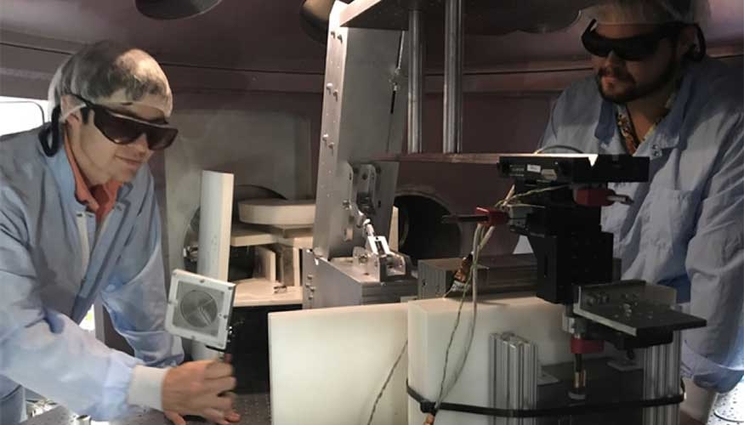Computation welcomes 2015 summer scholars
 (Download Image)
Computation summer scholars attend “Apple Time” a weekly social hour held in the scholar building. Photo by Lanie Rivera/LLNL
(Download Image)
Computation summer scholars attend “Apple Time” a weekly social hour held in the scholar building. Photo by Lanie Rivera/LLNL
Summer at the Laboratory is marked by long days, scorching weather and a seasonal infusion of talented students and faculty members. This year, Computation’s Institute for Scientific Computing Research (ISCR) welcomed 165 summer scholars from 97 universities in 9 countries — the largest group yet. These scholars, selected from among 715 applicants, comprised four faculty members, 86 graduate students, 68 undergraduates and seven high schoolers.
The applicant pool has steadily climbed over the years, thanks in part due to enthusiastic endorsements by past participants. About 20 percent of this summer’s scholars were repeat participants, a fairly typical figure. Another recruitment asset is Computation researchers, who help identify promising candidates.
Surely a large part of the appeal of Computation’s scholar program is its hands-on, career-oriented nature — a far cry from the paper shuffling and coffee delivery of the stereotypical internship. Not only do students gain research experience and work directly with science and engineering mentors, but they also attend technical seminars, workshops on resume writing and interviewing and networking and social events such as Computation’s weekly "Apple Time."
Another draw is the people. Notes scholar Charles Bing, an undergraduate at Denmark Technical College: "One thing that I have appreciated during my time here at the Lab is meeting new and different people." Shasha Wen, a graduate student from College of William and Mary, adds: "Everyone has been so kind and supportive. I feel that I can ask anyone questions and they would be happy to help me troubleshoot a problem."
With some changes in space planning, meeting fellow scholars has become even easier, too. This year, ISCR located the vast majority of summer scholars in a single building, Bldg. 315, which was renovated in preparation for their arrival. Scholars have appreciated the arrangement. "Working near other students in the building allows me to ask others for help whenever I have a question," says Federico Padua, a computer science Ph.D. student at Germany’s Johannes Gutenberg University Mainz. "We had not been at the Laboratory long before I had identified partners to collaborate with."
Also new this year is Data Heroes, a joint scholar program between the Engineering and Computation directorates designed to offer research opportunities in machine learning, statistics and high-performance computing. Data Heroes follows a trend at Livermore toward specialty summer programs. Others in Computation have included the Co-Design Summer School and Cyber Defenders, after which Data Heroes is modeled. These specialty programs are initiated by researchers who feel they have identified an unmet need.
Jim Gansemer, one of Data Heroes’ administrators, explains: "Existing internship opportunities did not have the specific focus on data sciences. It is a hot skill and highly competitive recruiting environment." Setting up a data science–focused program benefits recruiting, fosters new research collaborations and increases awareness of Livermore’s data science research. The program got off to a robust start, with 17 participants.
- By Rose Hansen/LLNL
Contact
Don Johnston[email protected]
925-423-4902
Related Links
Data HeroesCyber Defenders
Tags
HPC, Simulation, and Data ScienceComputing
Community Outreach
Featured Articles







